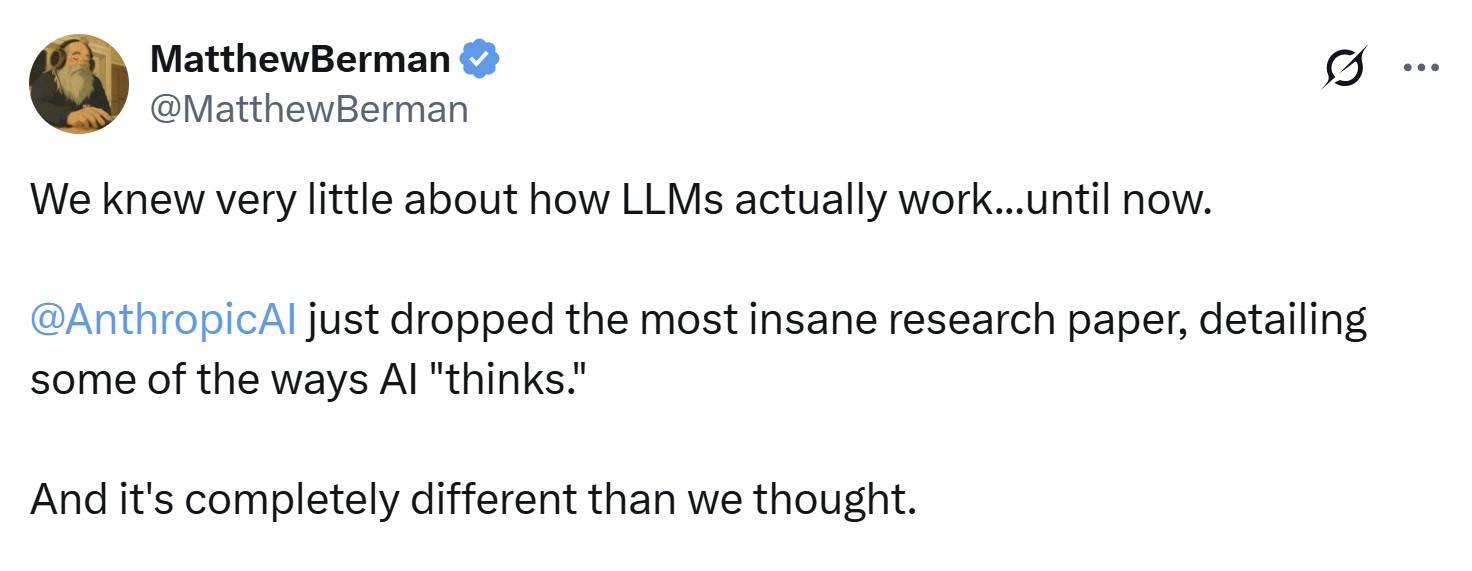
Read more here.
Enjoying the content on 3QD? Help keep us going by donating now.
John Timmer at Ars Technica:
 It’s no secret that “driving while black” is a real phenomenon. Study after study has shown that minority drivers are ticketed at a higher rate, and data from speed cameras suggests that it’s not because they commit traffic violations more frequently. But this leaves open the question of why. Bias is an obvious answer, but it’s hard to eliminate an alternative explanation: Minority groups may engage in more unsafe driving, and the police are trying to deter that.
It’s no secret that “driving while black” is a real phenomenon. Study after study has shown that minority drivers are ticketed at a higher rate, and data from speed cameras suggests that it’s not because they commit traffic violations more frequently. But this leaves open the question of why. Bias is an obvious answer, but it’s hard to eliminate an alternative explanation: Minority groups may engage in more unsafe driving, and the police are trying to deter that.
But now, Lyft has given a group of researchers access to detailed data from their drivers. The results confirm that minority drivers get more tickets, and they pay higher fines when they do. And the results also show that minorities aren’t in any way more likely to speed or engage in unsafe driving. Which suggests, in their words, that the problem is “animus” against minority drivers.
More here.
Enjoying the content on 3QD? Help keep us going by donating now.
Reed McConnell at Cabinet Magazine:
 Wilhelm Rumpf is a naughty boy, and Schoolmaster Heinzerling isn’t having it. When Dr. Heinzerling walks into his classroom one morning to find Rumpf holding forth in an uncanny imitation of his own peculiar manner of address, he sentences him to three days in the school jail, or Karzer. “At the naext stopaid traick I’ll aexpel you!” he tells Rumpf a few hours later while visiting him in his cell. “Pot yourself ain mai place.” Rumpf, convinced that his expulsion is inevitable, takes this last injunction literally, locking Heinzerling in the Karzer and giving orders in Heinzerling’s voice until he decides to strike a deal. Clear my name, he tells Heinzerling, and I’ll never tell anyone that I outwitted you. The deal holds, and no one is the wiser.
Wilhelm Rumpf is a naughty boy, and Schoolmaster Heinzerling isn’t having it. When Dr. Heinzerling walks into his classroom one morning to find Rumpf holding forth in an uncanny imitation of his own peculiar manner of address, he sentences him to three days in the school jail, or Karzer. “At the naext stopaid traick I’ll aexpel you!” he tells Rumpf a few hours later while visiting him in his cell. “Pot yourself ain mai place.” Rumpf, convinced that his expulsion is inevitable, takes this last injunction literally, locking Heinzerling in the Karzer and giving orders in Heinzerling’s voice until he decides to strike a deal. Clear my name, he tells Heinzerling, and I’ll never tell anyone that I outwitted you. The deal holds, and no one is the wiser.
First published in 1872, Ernst Eckstein’s short story “Der Besuch im Carcer” is a classic text in German high school classes and thematizes what was once an equally classic element of German universities and secondary schools. Starting in the sixteenth century, many educational institutions had their own jails, ranging in size from single rooms at boarding schools to entire wings or small buildings at larger universities.
more here.
Enjoying the content on 3QD? Help keep us going by donating now.
Jerry Saltz at The Vulture:
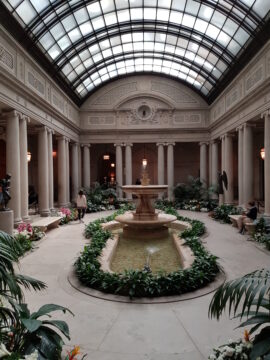 Square foot for square foot, the Frick has the densest concentration of masterpieces in America, installed alongside decorative objects in gloriously stuffy interiors. The art historian Bernard Berenson once sniffed that the Frick, founded by the morally compromised robber-baron philanthropist Henry Clay Frick, was just a “mausoleum.” Not true! Since Frick’s 1919 death, this stupendous museum has added countless gifts and acquisitions. A Watteau entered the collection in 1991. At the entrance is a wild Murillo self-portrait painted on a trompe l’oeil stone block that was added in 2014. At the Frick, we commune with the ages.
Square foot for square foot, the Frick has the densest concentration of masterpieces in America, installed alongside decorative objects in gloriously stuffy interiors. The art historian Bernard Berenson once sniffed that the Frick, founded by the morally compromised robber-baron philanthropist Henry Clay Frick, was just a “mausoleum.” Not true! Since Frick’s 1919 death, this stupendous museum has added countless gifts and acquisitions. A Watteau entered the collection in 1991. At the entrance is a wild Murillo self-portrait painted on a trompe l’oeil stone block that was added in 2014. At the Frick, we commune with the ages.
After a four-year absence for renovations, during which the collection was transported to the brutalist Breuer building on Madison Avenue, the Frick is happily back in its bigger, better Fifth Avenue manse. The cramped Music Room has been reclaimed as gallery space; the 70th Street Garden, created in 1977 by Russell Page, is intact; and although a new look-at-me staircase seems squished into the building, there is a sexy underground auditorium, a 60-seat café, and the entire second floor of the mansion is now filled with art. There’s almost twice as much on view now. What’s not to love?
more here.
Enjoying the content on 3QD? Help keep us going by donating now.
Enjoying the content on 3QD? Help keep us going by donating now.
Dana Stevens in Slate:
 What does it mean for a television show to be cinematic? It certainly doesn’t have to mean that the series in question is about the movie business, though that happens to be the case with The Studio, the new Apple TV+ comedy starring Seth Rogen and co-created by Rogen and his longtime creative partner Evan Goldberg (Superbad, Pineapple Express, Neighbors 2). In the first episode, Rogen’s Matt Remick becomes the new president of the venerable century-old Continental Studios when its previous head, industry legend and Matt’s onetime mentor Patty Leigh (Catherine O’Hara), is forced out of the job. Matt got into the business out of a love for classic cinema—he’s forever dropping references to everything from Goodfellas to Fight Club to I Am Cuba. But the realities of the 21st-century box office mean that his workdays revolve around meetings about acquiring the rights to the Kool-Aid brand name for a franchise that will star Ice Cube as the voice of an animated pitcher of red liquid.
What does it mean for a television show to be cinematic? It certainly doesn’t have to mean that the series in question is about the movie business, though that happens to be the case with The Studio, the new Apple TV+ comedy starring Seth Rogen and co-created by Rogen and his longtime creative partner Evan Goldberg (Superbad, Pineapple Express, Neighbors 2). In the first episode, Rogen’s Matt Remick becomes the new president of the venerable century-old Continental Studios when its previous head, industry legend and Matt’s onetime mentor Patty Leigh (Catherine O’Hara), is forced out of the job. Matt got into the business out of a love for classic cinema—he’s forever dropping references to everything from Goodfellas to Fight Club to I Am Cuba. But the realities of the 21st-century box office mean that his workdays revolve around meetings about acquiring the rights to the Kool-Aid brand name for a franchise that will star Ice Cube as the voice of an animated pitcher of red liquid.
More here.
Enjoying the content on 3QD? Help keep us going by donating now.
Bryan Walsh in Vox:
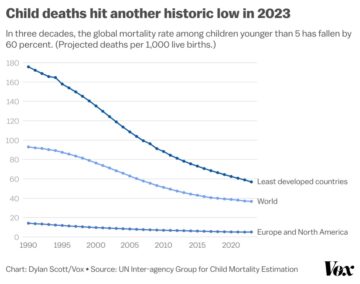 I was an English major in college, and my favorite poet was the first-generation Romantic William Wordsworth. For one thing, there’s the name, the best example of nominative determinism in the annals of English literature. But what I most love about Wordsworth is the way he acts as a bridge between the formal, at times stultified style of the poetry that came before him, and the dawn of a new era that venerated individual emotion and experience — both the good and the ill. All that comes together in one of my favorite Wordsworth poems: “Surprised by Joy”
I was an English major in college, and my favorite poet was the first-generation Romantic William Wordsworth. For one thing, there’s the name, the best example of nominative determinism in the annals of English literature. But what I most love about Wordsworth is the way he acts as a bridge between the formal, at times stultified style of the poetry that came before him, and the dawn of a new era that venerated individual emotion and experience — both the good and the ill. All that comes together in one of my favorite Wordsworth poems: “Surprised by Joy”
Love, faithful love, recalled thee to my mind–
But how could I forget thee? Through what power,
Even for the least division of an hour,
Have I been so beguiled as to be blind
To my most grievous loss?
Beneath the archaic language, the “thees” and so forth, the verse describes a father who is temporarily distracted from his loss by a moment of joy, only to recall with agonizing suddenness that the one person he wishes to share it with — his young child — is gone. The “surprise” in “Surprised by Joy” is that it was possible, even for the briefest moment, for the poet not to be consumed by that “most grievous loss.”
More here.
Enjoying the content on 3QD? Help keep us going by donating now.
geography is [not] destiny
wandering holding a backpack with
a device beeping, amidst the traffic
even a heartbeat is useless, following
an arrow on the Google map desire
steps in with mustard twilights of
a Northern winter, breathless for
an early renewal; poppies are still
fabulous, hoopoes mutter;
seeing skyscrapers through Ray-Ban
what is so distant is suddenly credulous
except for me keeping a tab on the itinerary
reaching out to contours of location,
loving someone from a distance and
with a bit of poetry is perilous, hedging
one’s own words written in the memory
of someone away and so tremulous.
by Rizwan Akhtar
Enjoying the content on 3QD? Help keep us going by donating now.
Enjoying the content on 3QD? Help keep us going by donating now.
David McLoghlin at Poetry Magazine:
 At the start of the last class, Breyten took a magnum of red wine out of a tote bag and plonked it on the table among our normal-sized bottles. It was a Bordeaux, I like to think. The bottle was hilariously large, as if it had priapism, and he shared it round in paper cups, then went into full-on raconteur mode. He’d been kicking back for at least half an hour and was talking about his cottage in Catalonia, near Girona, when I interjected something about the Barri Gòtic in Barcelona, trying to assert that I also knew a lot about the locale. Breyten’s eyes slid over me. He gave the merest nod and continued his ramifying digression.
At the start of the last class, Breyten took a magnum of red wine out of a tote bag and plonked it on the table among our normal-sized bottles. It was a Bordeaux, I like to think. The bottle was hilariously large, as if it had priapism, and he shared it round in paper cups, then went into full-on raconteur mode. He’d been kicking back for at least half an hour and was talking about his cottage in Catalonia, near Girona, when I interjected something about the Barri Gòtic in Barcelona, trying to assert that I also knew a lot about the locale. Breyten’s eyes slid over me. He gave the merest nod and continued his ramifying digression.
For three hours he ranged across the byways and walking trails linking poetry, Buddhism, politics, history. I realized that for the last 14 weeks he’d been listening carefully and sensitively, holding space, leaning forward, nodding. Now he seemed to be withdrawing from his teaching persona.
more here.
Enjoying the content on 3QD? Help keep us going by donating now.
Daisy Hildyard in The Guardian:
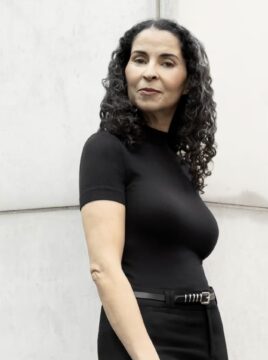 The Dream Hotel is Laila Lalami’s fifth novel – earlier works received nominations for the Booker, Pulitzer and National book awards – and has been longlisted for the Women’s prize. Her 2020 nonfiction book, Conditional Citizens, draws on her experiences as a Moroccan American to think about her adopted country’s two-tier system: how rights and freedoms are, in practice, exercised very differently across race, class, gender and national origin. Lalami’s fiction has explored the way these differences play out across a range of times and places: from Hope and Other Dangerous Pursuits (2005), on migrant experiences in modern Morocco, to The Moor’s Account (2014), inspired by the true story of a 16th-century Black man who survived a notorious Spanish colonial expedition to the Americas. Her most recent novel, 2019’s The Other Americans, is set in California in the shadow of the Iraq war, and follows the causes and repercussions of the moment when Driss, a Moroccan immigrant, is killed at an intersection by a speeding car.
The Dream Hotel is Laila Lalami’s fifth novel – earlier works received nominations for the Booker, Pulitzer and National book awards – and has been longlisted for the Women’s prize. Her 2020 nonfiction book, Conditional Citizens, draws on her experiences as a Moroccan American to think about her adopted country’s two-tier system: how rights and freedoms are, in practice, exercised very differently across race, class, gender and national origin. Lalami’s fiction has explored the way these differences play out across a range of times and places: from Hope and Other Dangerous Pursuits (2005), on migrant experiences in modern Morocco, to The Moor’s Account (2014), inspired by the true story of a 16th-century Black man who survived a notorious Spanish colonial expedition to the Americas. Her most recent novel, 2019’s The Other Americans, is set in California in the shadow of the Iraq war, and follows the causes and repercussions of the moment when Driss, a Moroccan immigrant, is killed at an intersection by a speeding car.
In The Dream Hotel, Lalami turns to the future. The novel is especially interesting as a vision of how AI could weave itself into the two-tier system that she has described and reimagined in earlier works.
More here.
Enjoying the content on 3QD? Help keep us going by donating now.
Natalie Hammond at LitHub:
 If you watch clips of his last appearance as Ziggy, at his infamous concert at the Hammersmith Odeon, you can see these rapid- fire changes in action. As Bowie starts “Ziggy Stardust,” he’s wearing a black diamond-shaped jumpsuit with shots of blue and red, his feet planted about a meter apart. Two pairs of hands materialize out of the darkness and deftly yank its sleeves, revealing the famously short white satin kimono, which is positively luminescent under the stage lights. He does the same thing again later with two more outfits by Kansai Yamamoto: the white cape revealing the marvelous, multicolored jumpsuit. At one point, Bowie goes offstage to change into his sculpted-shoulder two-piece, another number by Burretti, which he wears with the boots. You can tell how tight it is because he grimaces as it goes up his legs. He smooths out each of his sleeves so that they sit just so. He must have looked something like a red, blue, and silver mirage, a sensory assault on your eyes and ears that made them explode with color and sound. Exhilarating doesn’t even begin to describe it. This was nothing short of earth-shattering.
If you watch clips of his last appearance as Ziggy, at his infamous concert at the Hammersmith Odeon, you can see these rapid- fire changes in action. As Bowie starts “Ziggy Stardust,” he’s wearing a black diamond-shaped jumpsuit with shots of blue and red, his feet planted about a meter apart. Two pairs of hands materialize out of the darkness and deftly yank its sleeves, revealing the famously short white satin kimono, which is positively luminescent under the stage lights. He does the same thing again later with two more outfits by Kansai Yamamoto: the white cape revealing the marvelous, multicolored jumpsuit. At one point, Bowie goes offstage to change into his sculpted-shoulder two-piece, another number by Burretti, which he wears with the boots. You can tell how tight it is because he grimaces as it goes up his legs. He smooths out each of his sleeves so that they sit just so. He must have looked something like a red, blue, and silver mirage, a sensory assault on your eyes and ears that made them explode with color and sound. Exhilarating doesn’t even begin to describe it. This was nothing short of earth-shattering.
more here.
Enjoying the content on 3QD? Help keep us going by donating now.
Ethan Mollick at One Useful Thing:
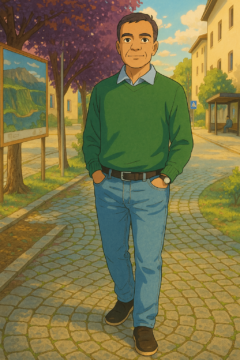
Over the past two weeks, first Google and then OpenAI rolled out their multimodal image generation abilities. This is a big deal. Previously, when a Large Language Model AI generated an image, it wasn’t really the LLM doing the work. Instead, the AI would send a text prompt to a separate image generation tool and show you what came back. The AI creates the text prompt, but another, less intelligent system creates the image. For example, if prompted “show me a room with no elephants in it, make sure to annotate the image to show me why there are no possible elephants” the less intelligent image generation system would see the word elephant multiple times and add them to the picture. As a result, AI image generations were pretty mediocre with distorted text and random elements; sometimes fun, but rarely useful.
Multimodal image generation, on the other hand, lets the AI directly control the image being made. While there are lots of variations (and the companies keep some of their methods secret), in multimodal image generation, images are created in the same way that LLMs create text, a token at a time. Instead of adding individual words to make a sentence, the AI creates the image in individual pieces, one after another, that are assembled into a whole picture.
More here.
Enjoying the content on 3QD? Help keep us going by donating now.
Enjoying the content on 3QD? Help keep us going by donating now.
Casey Mock at After Babel:
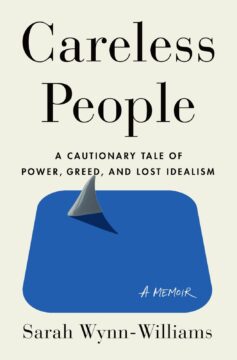 Meta’s governmental strategy and influence is now clearer than ever, thanks to Sarah Wynn Williams’s recently published memoir, Careless People. In her account of the culture of callousness, greed, unaccountability, and nepotism among Meta’s leadership – including Zuckerberg, former COO Sheryl Sandberg, and current President of Global Affairs Joel Kaplan – she details the company’s well-honed political playbook. Without any apparent sense of irony for a company that itself now refuses to fact-check, Meta is engaged in a legal and PR campaign to silence Wynn-Williams, claiming that the book contains fabrications and was not properly fact-checked. The publisher, Macmillan, stands by the book.
Meta’s governmental strategy and influence is now clearer than ever, thanks to Sarah Wynn Williams’s recently published memoir, Careless People. In her account of the culture of callousness, greed, unaccountability, and nepotism among Meta’s leadership – including Zuckerberg, former COO Sheryl Sandberg, and current President of Global Affairs Joel Kaplan – she details the company’s well-honed political playbook. Without any apparent sense of irony for a company that itself now refuses to fact-check, Meta is engaged in a legal and PR campaign to silence Wynn-Williams, claiming that the book contains fabrications and was not properly fact-checked. The publisher, Macmillan, stands by the book.
As someone with over a decade of experience in tech policy—including four years on Amazon’s public policy team—I found Careless People compelling and credible. Her insider’s account makes clear how Meta, despite widespread public awareness (thanks in part to Frances Haugen’s testimony), has repeatedly evaded meaningful accountability, even as the company facilitated genocide in Myanmar, created political chaos in the US and Europe, and manipulated the emotional vulnerabilities of teenagers for profit. Wynn-William’s revelations provide a behind-the-scenes look into a regulatory avoidance strategy I know well, because it’s the same political playbook Amazon uses, as well as Google, Microsoft, and other large tech and social media companies.
More here.
Enjoying the content on 3QD? Help keep us going by donating now.
Interview by Michiaki Matsushima in WIRED:
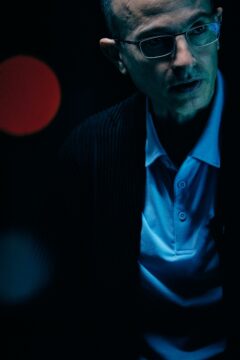 WIRED: In the late ’90s, when the internet began to spread, there was a discourse that this would bring about world peace. It was thought that with more information reaching more people, everyone would know the truth, mutual understanding would be born, and humanity would become wiser. WIRED, which has been a voice of change and hope in the digital age, was part of that thinking at the time. In your new book, Nexus, you write that such a view of information is too naive. Can you explain this?
WIRED: In the late ’90s, when the internet began to spread, there was a discourse that this would bring about world peace. It was thought that with more information reaching more people, everyone would know the truth, mutual understanding would be born, and humanity would become wiser. WIRED, which has been a voice of change and hope in the digital age, was part of that thinking at the time. In your new book, Nexus, you write that such a view of information is too naive. Can you explain this?
YUVAL NOAH HARARI: Information is not the same as truth. Most information is not an accurate representation of reality. The main role information plays is to connect many things, to connect people. Sometimes people are connected by truth, but often it is easier to use fiction or illusion.
The same is true of the natural world. Most of the information that exists in nature is not meant to tell the truth. We are told that the basic information underlying life is DNA, but is DNA true? No. DNA connects many cells together to make a body, but it does not tell us the truth about anything. Similarly, the Bible, one of the most important texts in human history, has connected millions of people together, but not necessarily by telling them the truth.
More here.
Enjoying the content on 3QD? Help keep us going by donating now.
Maggie Doherty in Harper’s Magazine:
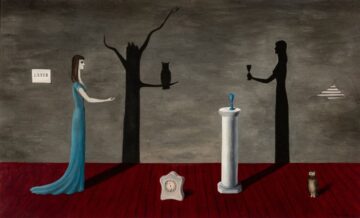 On the morning of February 2, 2023, I exited the subway at 57th Street to find the air growing colder. It had been a warm winter. But the first proper cold front was moving in, and I already felt underdressed. I propelled myself toward the warmth of the Midtown Hilton, where the American Psychoanalytic Association (APsA, as it’s styled) was gathering for its winter meeting.
On the morning of February 2, 2023, I exited the subway at 57th Street to find the air growing colder. It had been a warm winter. But the first proper cold front was moving in, and I already felt underdressed. I propelled myself toward the warmth of the Midtown Hilton, where the American Psychoanalytic Association (APsA, as it’s styled) was gathering for its winter meeting.
APsA has long been the institutional center of psychoanalysis in the United States. Founded in Baltimore in 1911 by, among others, Ernest Jones, Freud’s first biographer, its goals were to consolidate the profession and to standardize both training and treatment. Since then, the organization has overseen virtually every aspect of mainstream psychoanalysis in this country—research, education, and practice—and has resisted changes to many of its standards, casting a suspicious eye on analysts who proposed new ideas. In Psychoanalysis: The Impossible Profession, Janet Malcolm described APsA as having an “iron hold” over psychoanalysis in the United States.
More here.
Enjoying the content on 3QD? Help keep us going by donating now.
As every flower fades and as all youth
Departs, so life at every stage,
So every virtue, so our grasp of truth,
Blooms in its day and may not last forever.
Since life may summon us at every age
Be ready, heart, for parting, new endeavor,
Be ready bravely and without remorse
To find new light that old ties cannot give.
In all beginnings dwells a magic force
For guarding us and helping us to live.
Serenely let us move to distant places
And let no sentiments of home detain us.
The Cosmic Spirit seeks not to restrain us
But lifts us stage by stage to wider spaces.
If we accept a home of our own making,
Familiar habit makes for indolence.
We must prepare for parting and leave-taking
Or else remain the slaves of permanence.
Even the hour of our death may send
Us speeding on to fresh and newer spaces,
And life may summon us to newer races.
So be it, heart: bid farewell without end.
by Herman Hesse
translation: Richard and Clara Winston
Enjoying the content on 3QD? Help keep us going by donating now.
Laura Miller at Slate:
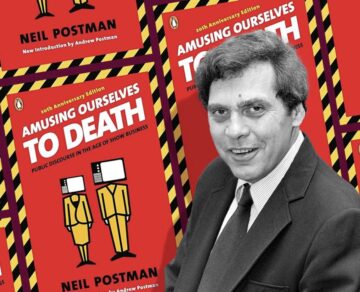 Every so often an eye-opening work of social criticism becomes a surprise bestseller. In 1979, everyone was talking about Christopher Lasch’s The Culture of Narcissism, and in 1987, it was Allan Bloom’s The Closing of the American Mind. Last year, Jonathan Haidt’s The Anxious Generation raised the alarm, encouraging readers outside the parenting-book world to consider what the teenage mental health crisis might mean for the culture at large. Typically the work of a professor with an aptitude for speaking to a general readership, this sort of book hits just as popular anxiety about a new technology or ideology—smartphones, the self-actualization movement, multiculturalism—is cresting. Ideas that may have been simmering away in academia suddenly burst into the common conversation. However, the very qualities that make these books feel tremendously relevant at a particular historical moment also tend to make them fade into obscurity when that moment passes. The blockbuster cultural criticism book tends to speak to its time—then become a curio as the culture changes around it.
Every so often an eye-opening work of social criticism becomes a surprise bestseller. In 1979, everyone was talking about Christopher Lasch’s The Culture of Narcissism, and in 1987, it was Allan Bloom’s The Closing of the American Mind. Last year, Jonathan Haidt’s The Anxious Generation raised the alarm, encouraging readers outside the parenting-book world to consider what the teenage mental health crisis might mean for the culture at large. Typically the work of a professor with an aptitude for speaking to a general readership, this sort of book hits just as popular anxiety about a new technology or ideology—smartphones, the self-actualization movement, multiculturalism—is cresting. Ideas that may have been simmering away in academia suddenly burst into the common conversation. However, the very qualities that make these books feel tremendously relevant at a particular historical moment also tend to make them fade into obscurity when that moment passes. The blockbuster cultural criticism book tends to speak to its time—then become a curio as the culture changes around it.
But Neil Postman’s Amusing Ourselves to Death has legs. For a book published 40 years ago about a medium—TV—no longer considered the prime driver of politics and culture, Amusing Ourselves to Death sure still turns up in op-eds, in podcasts, and in interviews, its central arguments about the media still startlingly relevant in the internet era.
More here.
Enjoying the content on 3QD? Help keep us going by donating now.
Matt Ridley at Literary Hub:
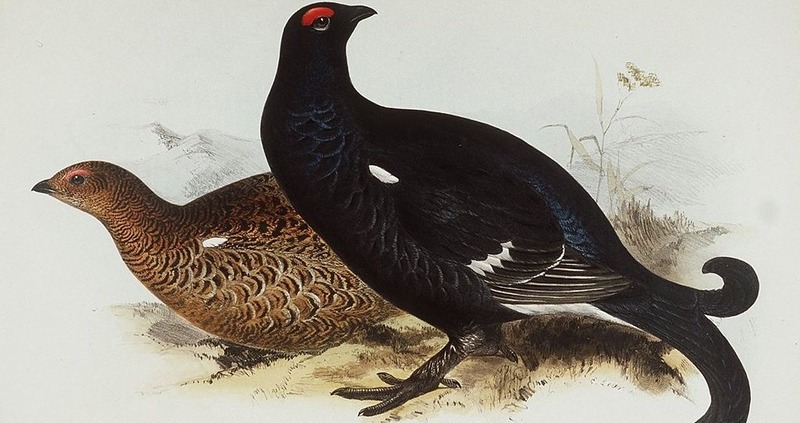 In all animals mating is a deal: one sex donates a few million sperm, the other a handful of eggs, the merger between which—unless a predator intervenes—will result in a brood of young. Win-win for the parents, genetically speaking. But there are few creatures that behave as if sex is a dull, simple or even mutually beneficial transaction and many that behave as if it is an event of transcendent emotional and aesthetic salience to be treated with reverence, suspicion, angst and quite a bit of violence.
In all animals mating is a deal: one sex donates a few million sperm, the other a handful of eggs, the merger between which—unless a predator intervenes—will result in a brood of young. Win-win for the parents, genetically speaking. But there are few creatures that behave as if sex is a dull, simple or even mutually beneficial transaction and many that behave as if it is an event of transcendent emotional and aesthetic salience to be treated with reverence, suspicion, angst and quite a bit of violence.
In the case of Black Grouse the males dance and sing for hours every day for several exhausting months, selling their little packages of sperm as passionately and persuasively (and frequently) as they can. To prepare for the ordeal they grow, preen and display fancy, twisted, bold-colored feathers. They gather together in one spot, putting themselves at conspicuous risk of attack by hawks and forgoing opportunities to feed. They fight with deadly intent again and again, suffering significant injuries. As excitement builds they expand the bright red, swollen, fleshy combs over their eyes, covered with hundreds of tiny tentacles like vermillion sea anemones. The act of sexual congress itself, the consummation of the deal, takes seconds. The rest has taken months of practice and preparation and is elaborate, extravagant, exhausting and elegant. Why?
More here.
Enjoying the content on 3QD? Help keep us going by donating now.